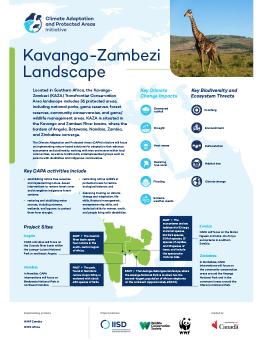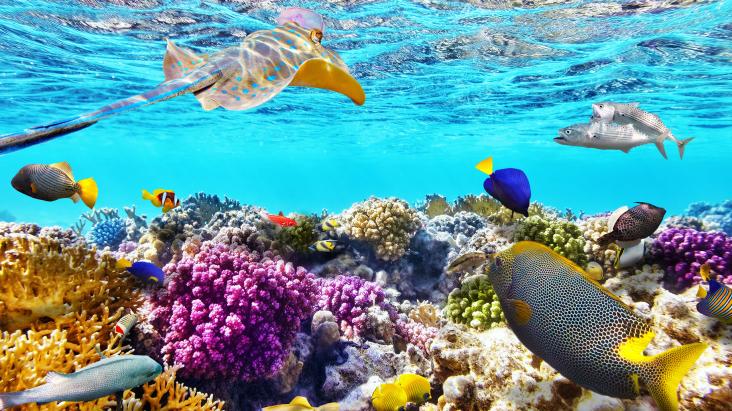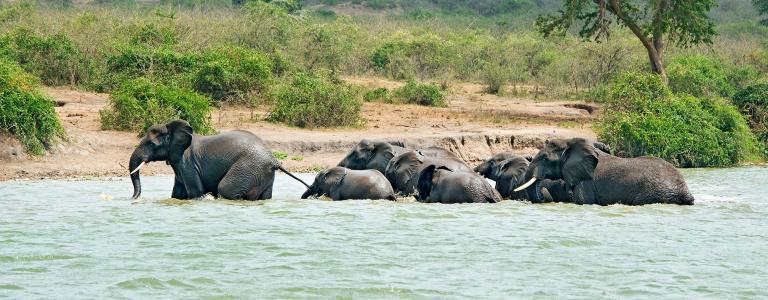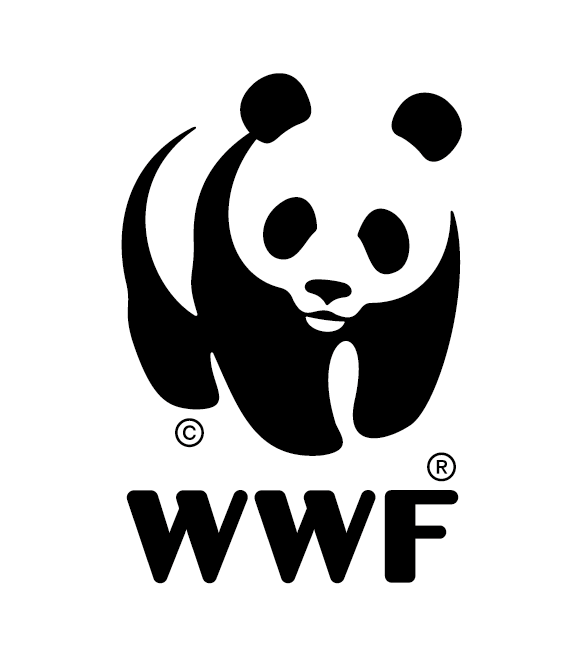The Kavango-Zambezi Landscape
In the Kavango-Zambezi (KAZA) Transfrontier Conservation Area landscape, specifically in Angola, Namibia, Zambia, and Zimbabwe, the Climate Adaptation and Protected Areas (CAPA) Initiative will promote the restoration of forest cover; restocking wildlife; supporting nature-positive livelihoods; and stabilizing headwater, riverine, and lagoon wetlands to enhance ecosystem integrity and biodiversity.
Located in Southern Africa, the KAZA Transfrontier Conservation Area landscape includes 36 protected areas, including national parks, game reserves, forest reserves, community conservancies, and game/wildlife management areas. KAZA is situated in the Kavango and Zambezi River basins, where the borders of Angola, Botswana, Namibia, Zambia, and Zimbabwe converge.
The region is experiencing climate change impacts, such as decreased rainfall, flooding, heat waves, and drought. KAZA also faces some key biodiversity and ecosystem threats, such as poaching, deforestation, habitat loss, land-use change, and encroachment.
The CAPA Initiative will work with local communities and civil society to design and implement nature-based solutions (NbS) for adaptation that enhance ecosystems and biodiversity while strengthening the resilience of critical ecosystems and community members to climate change.
Project Sites in the KAZA Landscape
Zambia: The CAPA Initiative will focus on the Sioma Ngwezi and Mosi-Oa-Tunya ecosystems in southern Zambia.
Angola: CAPA Initiative activities will focus on the Cuando River basin within the Luenge-Luiana National Park in southeast Angola.
Namibia: In Namibia, CAPA Initiative interventions will focus on the Bwabwata National Park in northeast Namibia.
Zimbabwe: In Zimbabwe, CAPA Initiative interventions will focus on the community conservation areas around the Hwange National Park and in the communal areas around the Chizarira National Park.
Did you know?
The Hwange-Sebungwe landscape, where the Hwange National Park is located, has the second-largest population of African elephants on the African continent (approximately 45,000).
Key CAPA Initiative activities in the KAZA landscape include
- establishing native tree nurseries and implementing inclusive nature-based interventions to restore forest cover and strengthen local forest systems;
- restocking native wildlife in protected areas to restore ecological balance;
- restoring and stabilizing water sources, including streams, wetlands, and lagoons, to strengthen water security and build resilience to drought;
- training and dialogues to encourage men and traditional leaders to champion the participation of women and underrepresented groups in NbS for adaptation activities; and
- delivering knowledge and skills training on gender-responsive NbS for adaptation to women and underrepresented groups, including persons with disabilities.
Related

Climate Adaptation and Protected Areas (CAPA) Initiative: Kavango-Zambezi Landscape poster
Highlighting the twin crisis of climate change and biodiversity loss in the Kavango-Zambezi (KAZA) landscape, this poster outlines the efforts of the Climate Adaptation and Protected Areas Initiative to address these challenges. It includes the initiative's project sites and activities focused on enhancing community resilience in and around protected areas in the KAZA region.

The Climate Adaptation and Protected Areas Initiative: What you need to know
The populations of millions of animal and plant species continue to decline at accelerating rates across the globe, with many under threat of extinction. The Climate Adaptation and Protected Areas (CAPA) Initiative will contribute to addressing this challenge.

